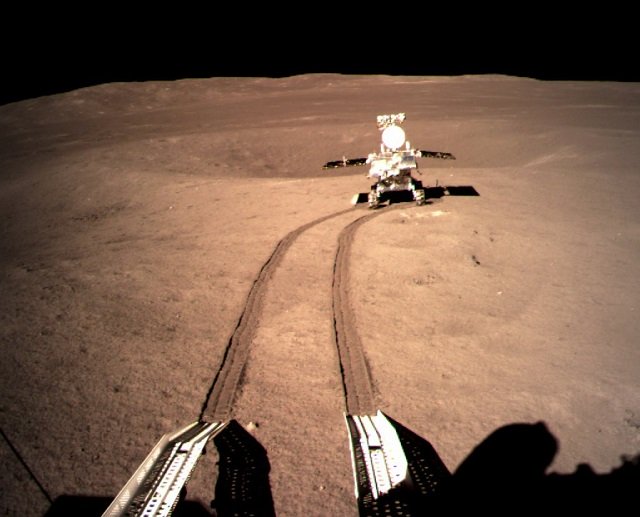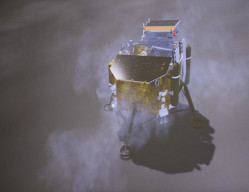
BEIJING: Images sent back from China's Chang'e-4 show that the first-ever probe to soft-land on moon's far side is surrounded by lots of craters of different sizes, which pose a great challenge for future exploration of the lunar rover Yutu-2.
The probe, comprised of a lander and a rover, touched down at the preselected landing area at 177.6 degrees east longitude and 45.5 degrees south latitude in the Von Karman Crater in the South Pole-Aitken (SPA) Basin on the far side of the moon on Jan. 3.
The China National Space Administration (CNSA) Friday unveiled several images taken by the Chang'e-4 probe transmitted back via the relay satellite Queqiao (Magpie Bridge).
Stunning footage of far side of moon, captured by China's Chang'e-4 probe during its landing. #ChangE4 pic.twitter.com/e1xvyjEcml
— China Xinhua News (@XHNews) January 11, 2019
One of the published images is a 360-degree panorama which was pieced together from 80 photos taken by a camera on the lander after the rover drove onto the lunar surface, according to Li Chunlai, deputy director of the National Astronomical Observatories of China and commander-in-chief of the ground application system of Chang'e-4.
China makes history with first landing on moon's far side
"From the panorama, we can see the probe is surrounded by lots of small craters, which was really thrilling," said Li.
One of the craters close to the rover Yutu-2 has a diameter of about 20 meters and a depth of about 4 meters. The rugged terrain will pose great challenges for planning the route of the rover, said Li.
Check out world's first panorama of the Moon's far side pic.twitter.com/lErzLRIIZ7
— China Xinhua News (@XHNews) January 11, 2019
Compared with the landing site of Chang'e-3, which was sent to the Sinus Iridum, or the Bay of Rainbows, on the moon's near side, fewer rocks can be found in the area surrounding Chang'e-4, indicating the landing area of Chang'e-4 might be older, said Li.
China declares Chang'e-4 mission, which realized the first-ever soft-landing on the far side of the moon, is a complete success pic.twitter.com/ii5ri1Sbbi
— China Xinhua News (@XHNews) January 11, 2019
He said the Chang'e-4 landed at an altitude of nearly minus 6,000 meters. The deepest region on the moon, where there is an altitude of minus 9,100 meters, is about 700 kilometers to the south of the probe.
"The information from the depths of the moon will be one of our focuses in the exploration," said Li.




























































COMMENTS
Comments are moderated and generally will be posted if they are on-topic and not abusive.
For more information, please see our Comments FAQ